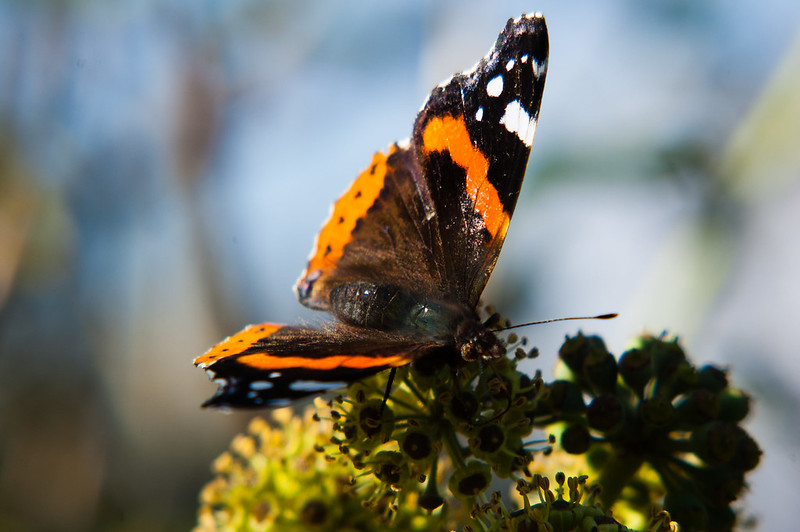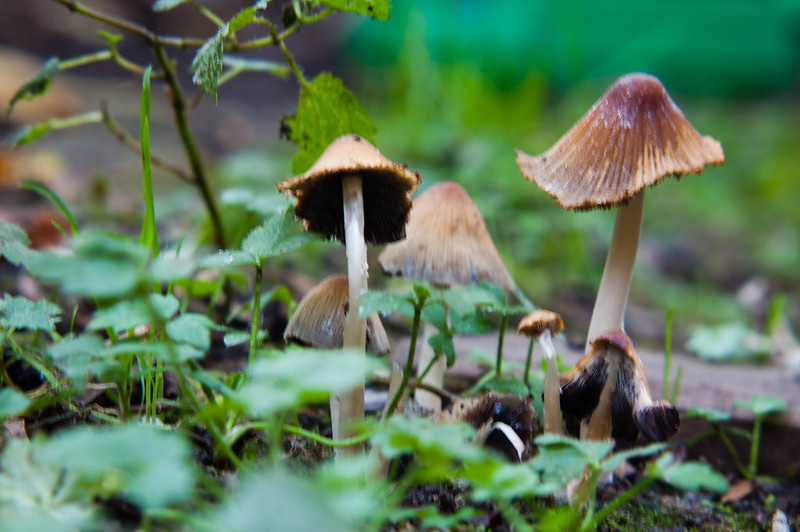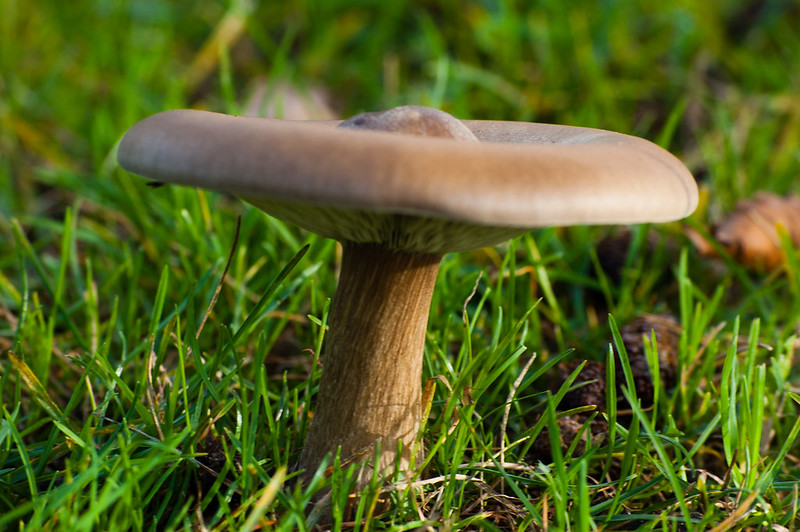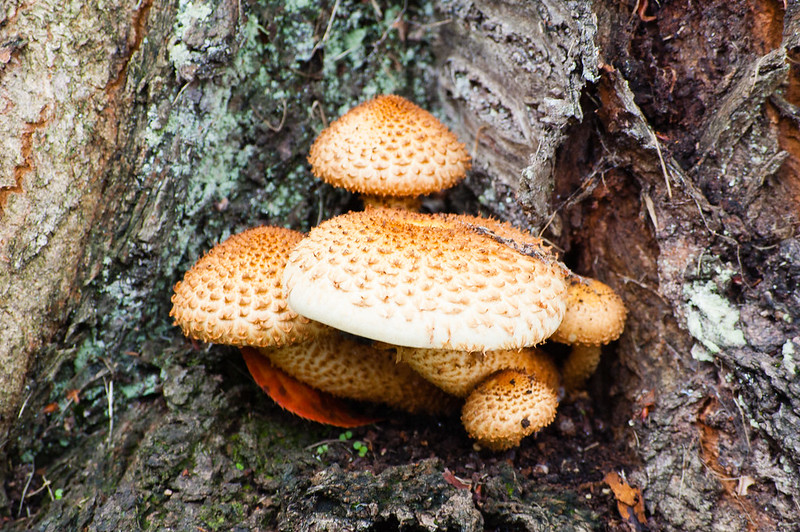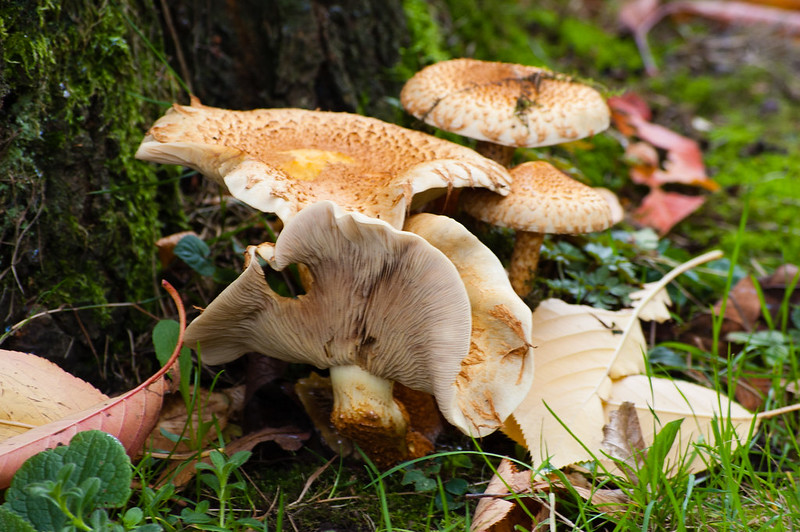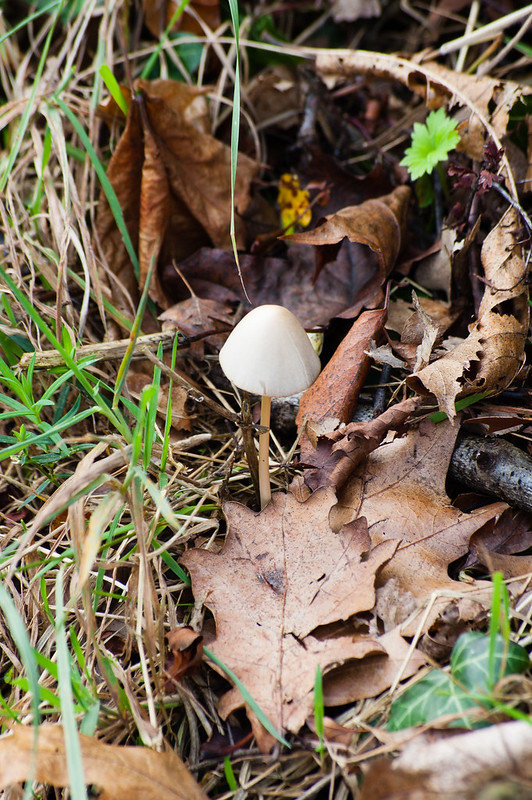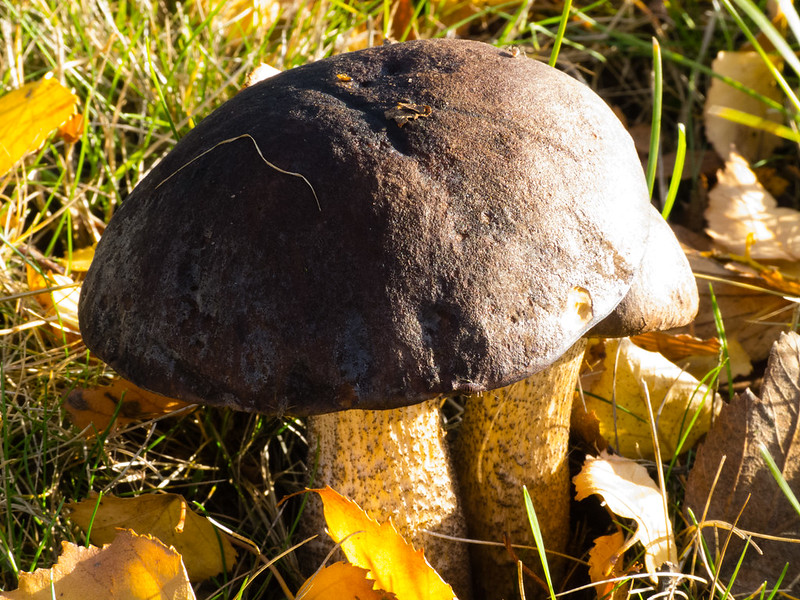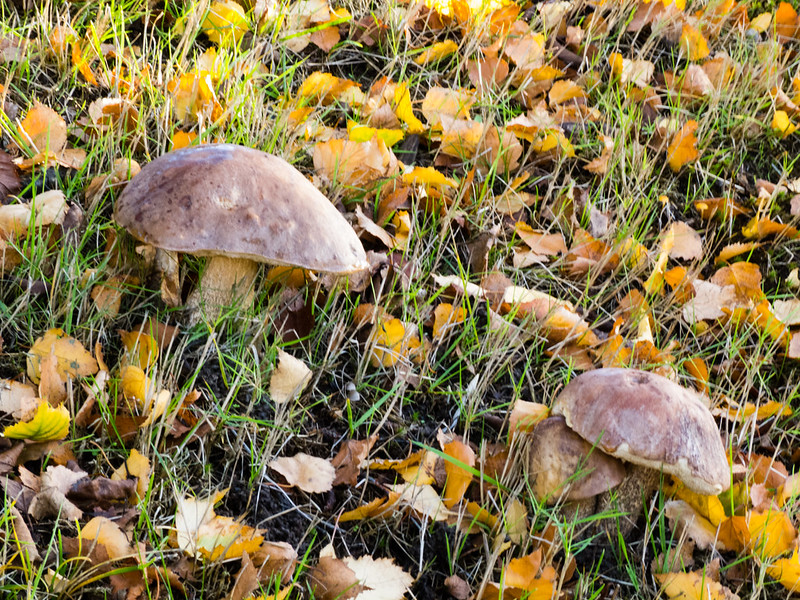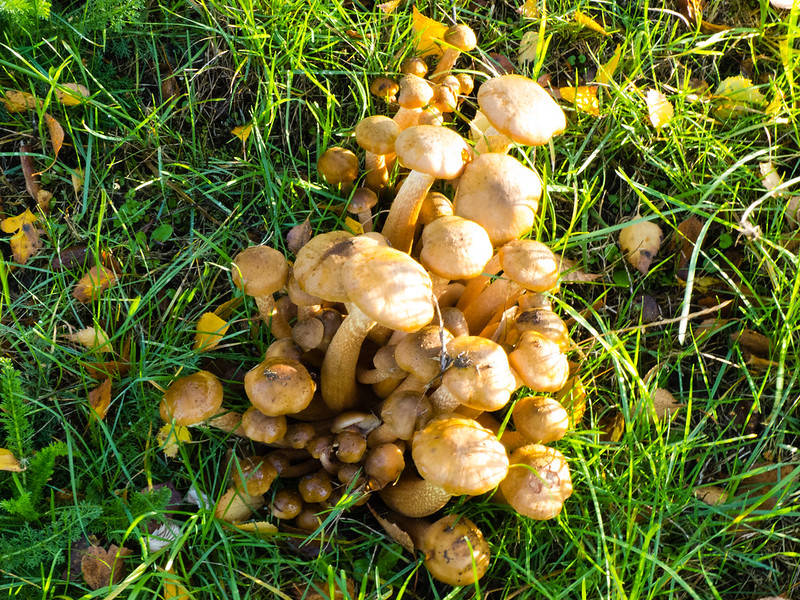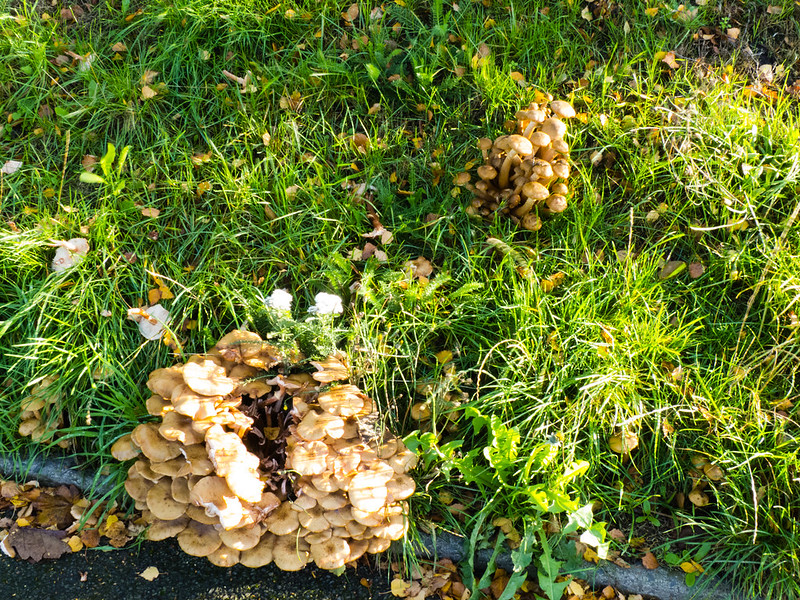Fungi are the commonest new growth at this time of year. But here is a change from all the fungi pictures which have dominated recent posts. This red admiral was pictured eating ivy flowers back in October.
It was having a long and leisurely meal, and kept changing its pose. The final picture shows the less conspicuous underwing.

